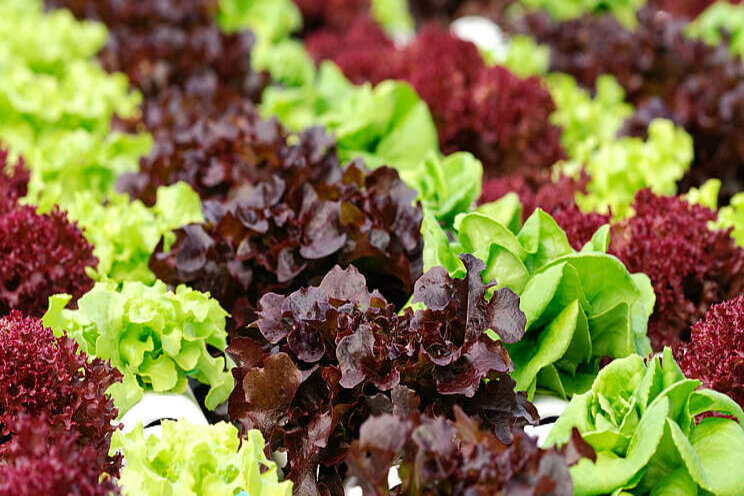CEA for short-cycle single harvest leafy green crops
Added on 23 June 2020

I will be focusing on each of these crop categories in this 4-part series:
- Short-cycle single harvest leafy green crops (e.g. lettuce, basil) - Part I
- Single-cycle single harvest crops typically grown as annuals (e.g. ornamental flowers, cannabis) - Part II
- Single-cycle multiple harvest crops typically grown as annuals (e.g. tomatoes, cucumbers) - Part III
- Multi-cycle multiple harvest perennial crops (e.g. berries) - Part IV
Short-cycle single harvest leafy green crops

Leafy greens are typically grown in greenhouses (typically as a single layer) or warehouses (typically on stacked shelves) using hydroponic, aquaponic or aeroponic (warehouses) methods. Growers use nutrient film technique (NFT), deep water culture (DWC), shallow water culture (SWC), ebb and flow (flood and drain). Starting seedlings at one end and harvesting crops at the other end is quite popular among growers of all scale.
This allows them to manage plants, pests/diseases and labor efficiently. Growers who have the best quality, consistent crops with higher yields win due to increasing demands for top quality produce. To do that, in addition to selecting the best starting material (seeds, plugs), more and more growers starting to control the environment precisely with proper crop management practices. Let's consider a greenhouse operation that grows lettuce.
They have deployed a moving gully system (NFT), which increases in spacing as the lettuce heads grow - plug, late seedling/leafy green and head lettuce stages. The plug to harvest system is in one continuous house. However, with the right equipment and infrastructure, they can maintain optimum temperature, light, relative humidity (RH), carbon dioxide (CO2), nutrient concentrations and pH for the three stages.

This is only possible if the zones respective to the stages are monitored and measured. So, a single sensor in the middle of the greenhouse won't provide sufficient information to understand plant performance and control zones accordingly.
Microclimates occur within zones (intra-zone) three-dimensionally as well. The climate variation at the edges compared to the center of the zone, and climate variation at-, above- and below-plant level is also very important. How does the root-zone/NFT gutter temperature change over time? How does the CO2 distribution look like at the plant level and what its distribution pattern looks like in the vertical profile of the compartment?
For example, the transplant stage may not require more than ambient levels of CO2, while during later stages growers can supply higher levels of CO2 (up to 1500 ppm) to the plants depending on the received light levels and temperature at the plant level. The above could be achieved by measuring the environment with distributed sensing (inter- and intra-zone sensing).
Let's look at another example: aeroponic cultivation of leafy greens in a warehouse. With this type of cultivation method, one of the challenges is to maintain optimum temperature and humidity at each level of the stacked cultivation due to vertical gradients. Young seedlings require sufficient RH until establishment. As they grow, the day/night RH levels should be maintained at optimum levels for maximum growth and to prevent physiological disorders such as tip-burn and downstream diseases.

In order to maintain proper environmental conditions for different growth stages, it's important to measure them at each level at representative locations (e.g. at the center and close to the edges of each shelf).
Microclimate sensing allows growers to measure and control the growing environment precisely at different stages of crop growth and development. Growers who utilize these tools will win the game of who produces the top-quality produce profitably. However, it depends on the availability of proper equipment, infrastructure, controls, crop management, knowledge about the crops, their biology and financials.
Source and Photo Courtesy of Autogrow
Source: Autogrow
More news















